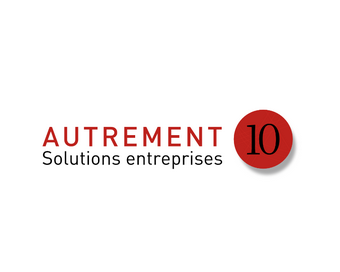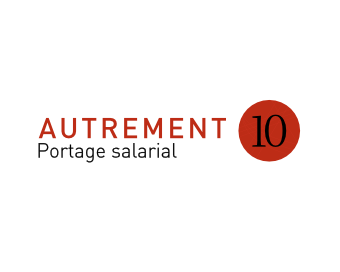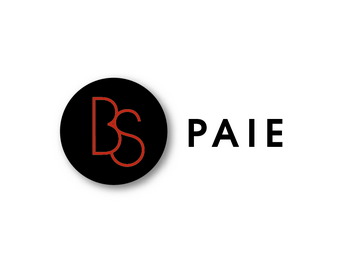jan 10 2024
Break-even point U S. Small Business Administration
For the past 52 years, Harold Averkamp (CPA, MBA) has worked as an accounting supervisor, manager, consultant, university instructor, and innovator in teaching accounting online. The break-even point is an extremely important starting goal to work towards. No matter whether you are a business owner, accountant, entrepreneur or even a marketing specialist – you will often come across this metric, which is why our online calculator is so handy. Get instant access to video lessons taught by experienced investment bankers.
- The latter two names are appealing because the break-even technique can be adapted to determine the sales needed to attain a specified amount of profits.
- ” Established companies that have suffered through some rough years might have a similar question.
- For companies, gauging how and when they will reach the breakeven point is crucial for financial planning and pricing.
- Contribution margin is the amount remaining after all variable expenses are subtracted from revenues.
- Use your break-even point to determine how much you need to sell to cover costs or make a profit.
Break-even point analysis
Traders can use break-even analysis to set realistic profit targets, manage risk, and loses record amount in its year make informed trading decisions. Break-even analysis assumes that the fixed and variable costs remain constant over time. However, costs may change due to factors such as inflation, changes in technology, and changes in market conditions.
They include, for example, raw materials, variable labor and transport costs. Experiment with different pricing strategies, cost reductions, or sales volume adjustments to improve profitability and financial sustainability. Regularly revisiting and updating your break-even analysis ensures it remains relevant as market conditions change. You can also use it as a benchmark to track financial performance and adjust business strategies accordingly. Before allocating funds to a new project, product, or expansion, businesses need to evaluate its financial feasibility. A break-even analysis minimizes the risk of investment failures by providing a clear understanding of the required sales volume and potential profitability.
Sales Where Operating Income Is \(\$0\)
Sales teams can use this information to develop performance benchmarks, track progress, and adjust strategies to align with financial objectives. Additionally, businesses can use break-even data to model different sales scenarios, helping them plan for seasonal fluctuations, market shifts, and growth opportunities. This ensures that revenue strategies are both achievable and sustainable.
It indicates the amount available from sales to cover the fixed expenses and profit. Break-even analysis looks at fixed costs relative to the profit earned by each additional unit produced and sold. The breakeven point is the exact level of sales where a company’s revenue equals its total expenses, meaning the business neither makes a profit nor has a loss. Since we earlier determined $24,000 after-tax equals $40,000 before-tax if the tax rate is 40%, we simply use the break-even at a desired profit formula to determine the target sales. Fixed costs are those expenses that do not vary according to the company’s level of activity. For example, rent, salaries of permanent employees or insurance costs remain the same, whatever the volume of production or sales achieved.
At this level of sales, they will make no profit but will just break even. On the other hand, variable costs change based on your sales activity. As you can see, when Hicks sells \(225\) Blue Jay Model birdbaths, they will make no profit, but will not suffer a loss because all of their fixed expenses are covered. The contribution margin per car lets you know that after the variable expenses are covered, each car serviced will provide or contribute $15 toward the Oil Change Co.’s fixed expenses of $2,400 per week.
Break-Even Calculator
This break-even analysis is based on the foundation of a single product or service. This difference is a common representation of what markets expect inflation to be in the future—here, after 5 years and 30 years. When applying for the Clover Account experience without hardware, the monthly software fee is waived for double declining balance method of deprecitiation formula examples 90 days. After the 90-day trial period, the cost for Virtual Terminal is $14.95 per month when no other software plan is in effect. You might think of using the break-even formula after opening a new shop, so you can gauge your financial performance.
Calculate a Break-Even Point in Units and Dollars
Eventually the company will suffer losses so great that they are forced to close their doors. When companies calculate the BEP, they identify the amount of sales required to cover all fixed costs before profit generation can begin. The break-even point formula can determine the BEP in product units or sales dollars. As you can imagine, the concept of the break-even point applies to every business endeavor—manufacturing, retail, and service.
It is not intended to 100% accurately determine your accounting or financing since those calculations can only be done after all costs and production have occurred. It’s also a good idea to throw a little extra, say 10%, into your break-even analysis to cover miscellaneous expenses that you can’t predict. The break-even point is the point at which total cost and total revenue are equal, meaning there is no loss or gain for your small business. In other words, you’ve reached the level of production at which the costs of production equals the revenues for a product.
Break-Even Analysis Example
This method is often used to get a more global view of the company, especially when it offers several products or services with different unit costs. The sum of all variable costs per unit, calculated to assess profitability per unit sold. Subtract variable costs from total profit in dollars, then divide the fixed costs by this figure. First we need to calculate the break-even point per unit, so we will divide the $500,000 of fixed costs by the $200 contribution margin per unit ($500 – $300). This calculation demonstrates that Hicks would need to sell \(725\) units at \(\$100\) a unit to generate \(\$72,500\) in sales to earn \(\$24,000\) in after-tax profits.
Let’s take a look at a few of them as well as an example of how to calculate break-even point. Let’s take a look at how cutting costs can impact your break-even point. Say your variable costs decrease to $10 per unit, and your fixed costs and sales price per unit stay the same.
Break-even point in sales dollars
It also assumes that there is a linear relationship between costs and production. Break-even analysis ignores external factors such as competition, market demand, and changes in consumer preferences. To find the total units required to break even, divide the total fixed costs by the unit contribution margin.
Break Even Point Calculation Example (BEP)
The number of units that must be sold to cover total costs, ensuring neither profit nor loss. The break-even point in business is when you us tax deadlines for expats businesses 2021 updated are making enough money to cover your expenses. To find your break-even point, divide your fixed costs by your contribution margin ratio. Fixed costs are expenses that remain the same, regardless of how many sales you make.
The break-even point is your total fixed costs divided by the difference between the unit price and variable costs per unit. Keep in mind that fixed costs are the overall costs, and the sales price and variable costs are just per unit. Easily calculate the break even point for any product or service and generate a graph with the break-even point.
- The break-even point formula divides the total fixed production costs by the price per individual unit less the variable cost per unit.
- Variable costs, on the other hand, are directly linked to the company’s level of production or sales.
- However, using the contribution margin per unit is not the only way to determine a break-even point.
- That’s why they constantly try to change elements in the formulas reduce the number of units need to produce and increase profitability.
- Every business faces a critical threshold in its operations—the point at which sales revenue precisely covers all expenses.
Total Variable Cost (Per Unit)
Typically, the first time you reach a break-even point means a positive turn for your business. When you break-even, you’re finally making enough to cover your operating costs. Fixed costs are costs and expenses which do not change in response to reasonable changes in sales or another activity. You should consider our materials to be an introduction to selected accounting and bookkeeping topics (with complexities likely omitted).
The revenue per unit is an expression of how much revenue the business earns from selling a single unit of product or service. It’s also important to keep in mind that all of these models reflect non-cash expense like depreciation. A more advanced break-even analysis calculator would subtract out non-cash expenses from the fixed costs to compute the break-even point cash flow level. The break-even formula in sales dollars is calculated by multiplying the price of each unit by the answer from our first equation.

































